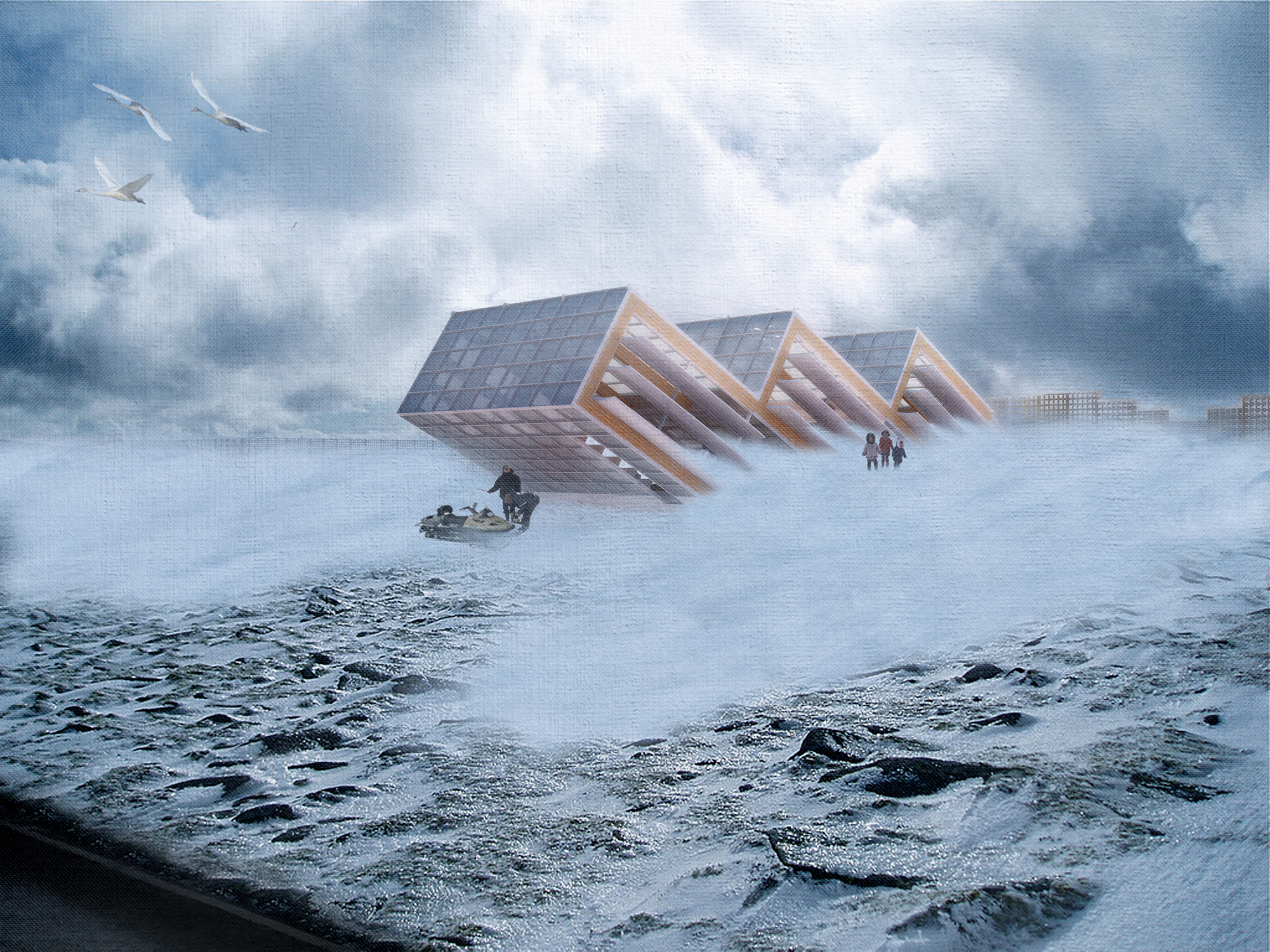Pre-WWII, indigenous, Inuit housing types not only embraced the nomadic Inuit lifestyle, but with zero ecological footprint, these dwellings employed opportunities from the landscape and atmosphere to form a complex shelter that negotiated thermal performance, local materials, soft construction techniques, program, and cultural values. Permanent architecture, in the form of prefabricated housing, was employed by the Canadian Government during the Cold War in an effort to assert Arctic Sovereignty. Importing a ‘southern’ model of dwelling, the housing took the form of hermetic containers, which were highly contingent on imported materials, energy consumption, labor, and transport costs — and have formed the template for Arctic shelter in Canada that still persists today. The Drift House hybridizes the intelligence of tradition and technology in both of the above housing systems by leveraging snow fences, a typically static infrastructure that is used to protect roadways from snow accumulation. These fences are recalibrated with differential mesh openings (porosity) and heights to produce a precise pattern of passive snow accumulation from the dynamics of snowdrift. During the summer, three enclosed zones with courtyards form a stronger connection with the landscape. During the winter, accumulated snowdrifts activate the house, essentially tipping the three units into a single, thermally nested space. Not only does the snow passively ‘build’ part of the dwelling, it also serves as counterweight to the cantilevered structure, insulation for the envelope, and a source of water for the inhabitants.









